Herff College of Engineering
Research Interests

Active Research Interests
Structural Health Monitoring Via Flexible Photovoltaics
Structural Health Monitoring (SHM) Systems have been studied by engineers and researchers for years, with designations in various journals, etc. Current techniques are mostly based on acoustic emissions, thermography, x-rays, and strain gauges. In practice, their application may be laborious, time consuming and expensive. New research based on the triboluminescent (TL) phenomenon may provide a relatively efficient and inexpensive way for ubiquitously monitoring the health of structures in real time. This can be addressed through a biomedical inspired approach known as passive structural neural system (SNS). The sensors would be attached to the inner surface for continuous health monitoring. In the system, PV sensors are weaved into the fiber structure which forms composite materials. These sensors are connected to form the SNS that is in turn connected to the computer for data acquisition, storage, and analysis.
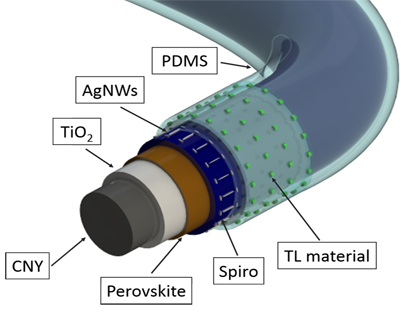
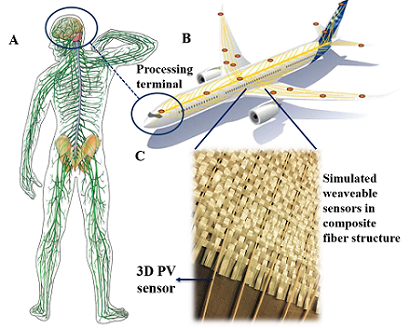
Triboluminescent Sensor System For Real-Time Load Monitoring
Real-time load monitoring in large dynamic structures such as wind turbine blades is imperative for extended operational life cycle. Strain gauges, accelerometers, and fiber optic sensors are commonly used for load monitoring. Strain gauges and accelerometers are mature sensors, but require lots of wirings, which pose critical difficulties for sensor deployment. The FBG sensor can solve abovementioned problems but requires expensive and bulky interrogation equipment, which may prevent its widespread field application in wind turbine blade monitoring. It is therefore necessary to develop a new non-complex, cost-effective sensor system that can monitor loads on blades in real-time. Triboluminescent-based sensors could be promising candidates for real-time load monitoring in dynamic structures such as wind blades. The C-shaped ITOFPress consists of ITOF sensor network with micro-exciters integrated within a polymer matrix. Micro-exciters excite TL materials resulting in enhanced TL emissions. Sensors were subjected to repeated loading and generated distinct TL emission corresponding to each loading cycle. TL intensity increases with the increase of loading rate and increases exponentially with an applied load. The plot of logarithmic TL intensity with applied load follows linear relationship, which is desirable.
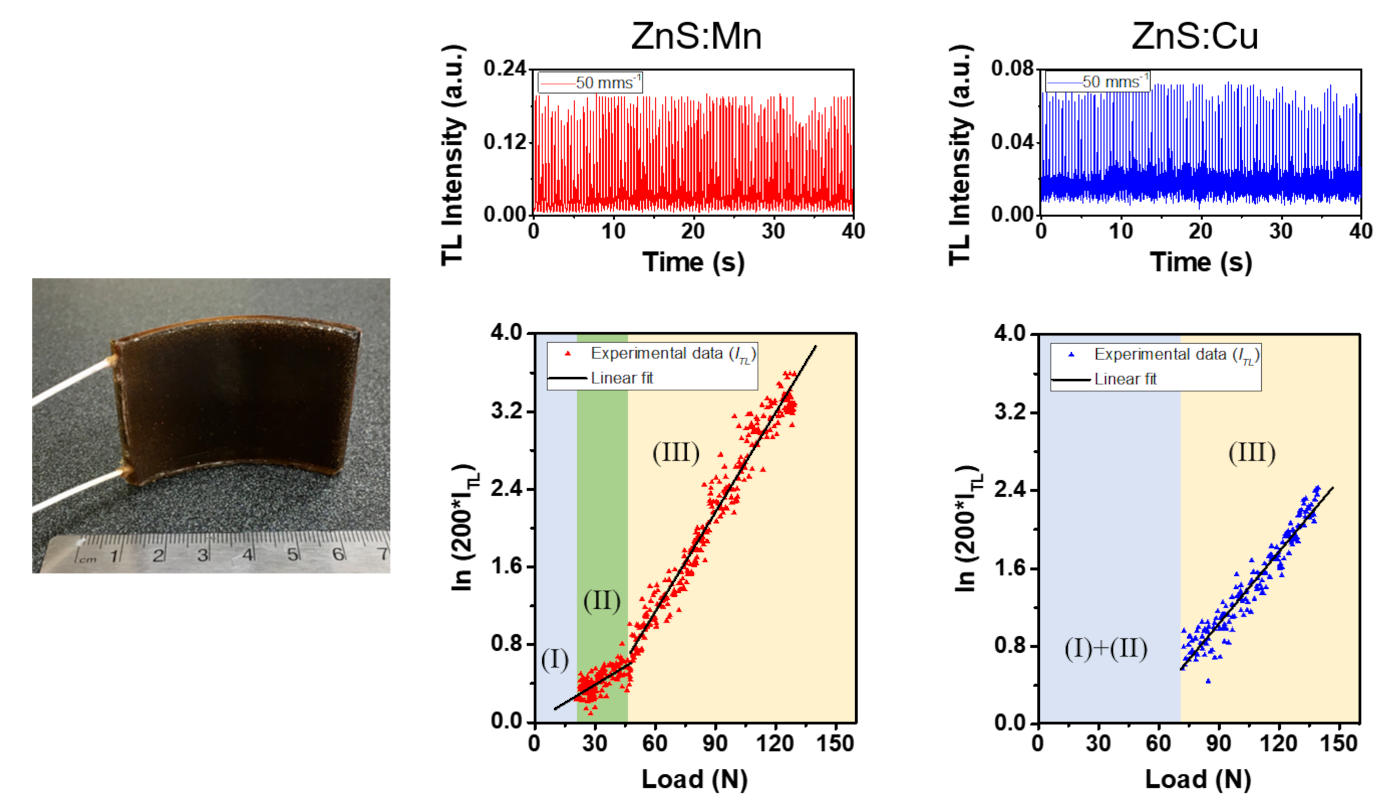
Dormant Research Interests
Integrated Structural Health Monitoring And Self-Healing For Composites
Fiber-reinforced polymer composites (FRPCs) have a variety of applications in diverse industries. However, predicting the failure of FRPCs is more difficult than predicting the failure of more traditional materials like steel. Furthermore, composites can suffer extreme internal damage, but show little if any external indication that damage has occurred [1]. Non-destructive inspection techniques have been developed to check for internal damage, but such methods are costly and time-consuming, which means that inspection is often limited to small areas. To address this issue, an FRPC has been created which emits a notification of where damage has occurred as it occurs. The FRPC will heals the damage while the structure is still in use. It is the first composite to combine distributed damage monitoring [2] and self-healing technology [3]. Damage notification is achieved with triboluminescent (TL) crystals that emit light when stressed or broken. Photovoltaics (PVs) translate the emitted light into an electrical signal. Healing is achieved by distributed microcapsules containing liquid healing material. When damage occurs, the microcapsules release healing material into the damaged area. This research follows three phases. In Phase 1, the manufacturability of TL-doped resins is investigated. Cure kinetics, mechanical properties, and light emission of TL-doped resins are tested and recorded. In Phase 2, the TL-PV system is validated through stress-emission tests. In Phase 3, the structural capabilities of the composite are determined through active sensing throughout a virgin-damage-heal cycle.
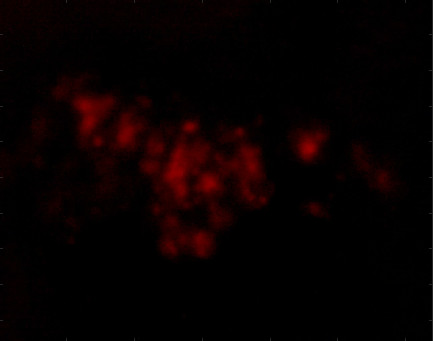
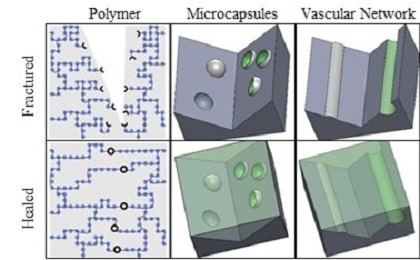
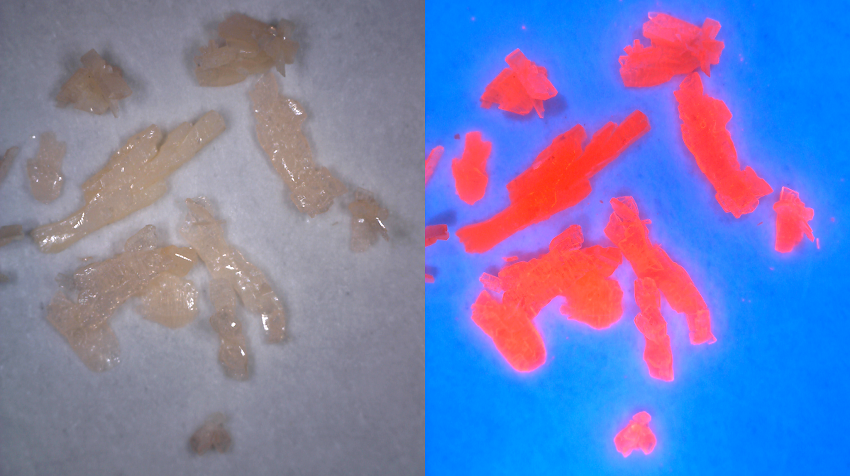
Citations
- Davies, G. and X. Zhang, Impact damage prediction in carbon composite structures. International Journal of Impact Engineering, 1995.
- Olawale, D.O., et al., Development of a triboluminescence-based sensor system for concrete structures. Structural Health Monitoring, 2012. 11.
- Scheiner, M., T.J. Dickens, and O. Okoli, Progress towards self-healing polymers for composite structural applications. Polymer, 2016. 83: p. 260-282.
Development Of Processing Conditions For Manufacture Of Reliable Advanced Ceramic Preforms And Ceramic Matrix Composites
Ceramic materials offer many favorable properties including high strength, wear resistance, high hardness, and chemical resistance. However, ceramics suffer from brittle or catastrophic failure under loading due to low fracture toughness. Therefore, ceramics are under-utilized in many application areas which would otherwise benefit from the advantageous properties that ceramics possess. Additionally, the processing of advanced ceramics and ceramic composites is often complex. There is a high cost associated with producing complex three-dimensional ceramic parts. Near-net-shape or net-shape processing is favored because machining of ceramics is costly. Furthermore, ceramics are prone to flaw incorporation during processing. These flaws are points of stress concentration and lead to a reduction in properties. The addition of a secondary phase within the ceramic may improve the toughness and also alter the failure mode.
The determination of repeatable and reliable manufacturing methods that are capable of producing complex ceramics and ceramic composites is necessary. This may lead to a reduction in cost, improvement of mechanical properties, and utilization of ceramics and ceramic composites in many applications where these materials are otherwise under-utilized. A thorough understanding of the relationships between the processing techniques, the resulting microstructure, and the properties of ceramic materials is thus required.
Road Map To Ceramic-Metal Composite Fabrication
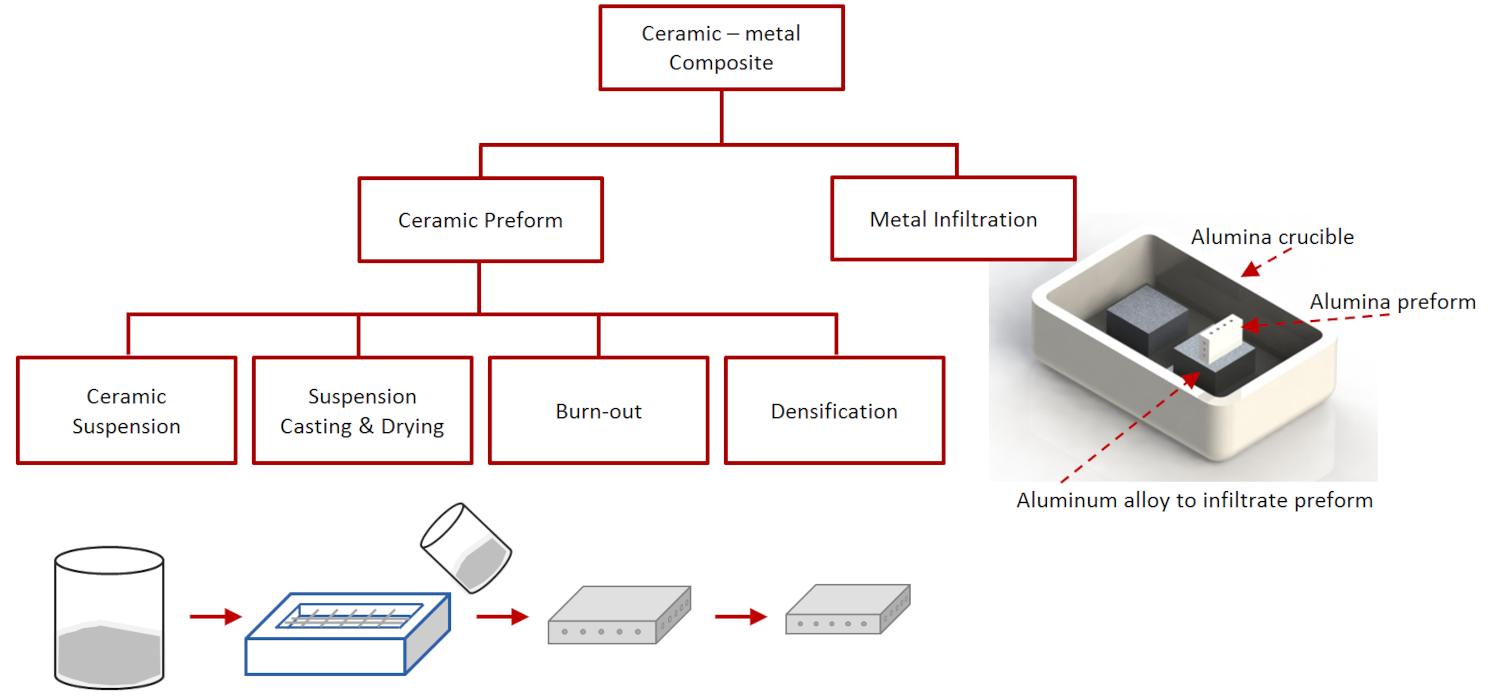
The proposed research involves the fabrication of tailorable ceramic preforms with multidimensional vascularity and the utilization of these preforms in the fabrication of ceramic-metal composites. During the colloidal processing of the ceramic, a sacrificial template will be incorporated to act as a place holder for the vascular network. Once the sacrificial template is removed from the ceramic, a network of hollow channels is left behind. The sacrificial template can be altered to provide the desired internal geometry. The vascular network has the potential to be used in a variety of ways befitting the application. An objective of the proposed research is to investigate the use of the ceramic as a preform for composite manufacture. The network of hollow channels will be infiltrated with an aluminum alloy. The overall concept is to improve the ceramic properties through the use of specific processing techniques and through the addition of a ductile phase. Investigation of the mechanical properties will be conducted to determine the effects of the reinforcement geometry on the properties of the composite.
Foam Dispersion Techniques
Recently, there has been an abundance of interest in making improvements to the mechanical properties as well as implementing some functional properties (i.e. self-healing, power saving, self-sensing, electrical conductivity) to composites structures. In order to achieve such millstones, many have resorted to the implementation of extra components into the composite structure. These components range in size, from nano –micro scale and can be introduced into the composite architecture by various means.
Although there have been many successful integrations of such components to composite structures, the integration of components is plagued with difficulties. Smaller i.e. nan-scale components tend to be difficult to mix as they become agglomerated and block flow pathways during resin infusion. Larger components present similar flow problems with some added concerns regarding possible delamination.

Figure 1 : Displaced Foam Dispersion Technique
To circumvent these processing and potential performance issues, a new method for integrating components has been developed by Okoli, Kim and Dennis, deemed Displaced Foam Dispersion (DFD). This technique has two key features: 1. component integration, in which the components (CNT, silica etc.) via a series of processes are incorporated into polymer foam. 2. composite fabrication. The augmented foams are layered between composite fiber layers and subsequently infused with the matrix constituent (Figure 1). The most unique feature of this technique is observed as the polymer dissolves in the presence of the matrix constituent leaving the components in place.
Manufacture of Multiscale Composites Utilizing Displaced Foam Dispersion Methodology
The DFD technique is a novel concept that utilizes preexisting composite technologies in a unique methodological arrangement to facilitate more efficient manufacturing. This technique is sought to be the solution to several challenges of multiscale composite manufacturing such as incorporating multifunctionality, scalability and selective placement. The premise guiding the DFD technique yields to the ability of polymer foam encapsulating nanoparticles to chemically react, dissolve and merge with a polymer resin, thus allowing the inset nanomaterials to remain in their incumbent positions. The multifunctionality becomes apparent when various types of nanomaterials possessing different properties can be incorporated into a single vacuum assisted resin transfer molding (VaRTM) infusible part. Lastly, the selective placement becomes apparent when the encapsulated nanomaterial foam can be positioned where desired into the same single VaRTM infusible part.
Findings:
- The nanocomposite foams in the current work are made by calendaring plasticized PS-CNT nanocomposite (CNTaffy) into films and expanding them into PS-CNT foams achieving scalability.
- Thermal gravimetric analysis (TGA) is used to further validate the presence of the CNTs and to quantify their actual weight percent contribution within the nanocomposite foam.
- The measured versus the actual CNT weight percent loading shows an approximately 1.0 % (±0.13) average difference in all samples tested.
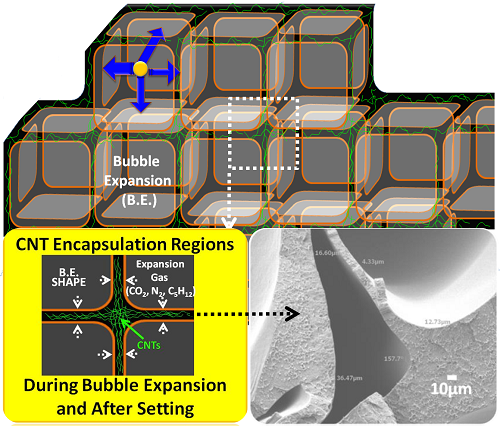
Schematic drawing illustrating PS-CNT Foam structure emphasizing CNT encapsulation regions (with sub-integrated SEM image of (a) actual PS-CNT foam nanocomposite).
